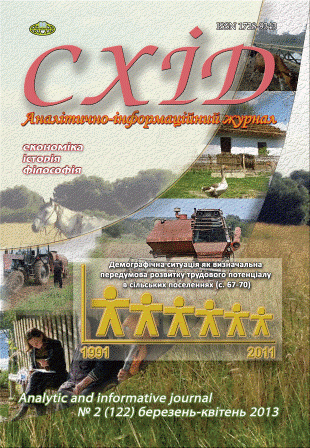Application of object analysis for modeling system of development personnel
DOI:
https://doi.org/10.21847/1728-9343.2013.2(122).13451Keywords:
modeling, system training, personnel development, object analysisAbstract
The article summarized the fundamental principles of an effective system of personnel development at the industrial enterprise and constructed fragments of the object model of the system, which is the initial informative basis for automation of HR at the company. The initial presentation of staff development in the object diagram notation is a precedent that gives an overview of the functional features of the actor, which in this case is the service management. The next step is to develop a modeling class diagrams, which allows to introduce fukntsionalni features involved in the implementation of objects precedent, what has to be divided into two stages. In the first stage examines the process of training that exists in the company, and are the persons that in the model presented in the form of classes. The second stage - with features defined implementation process automation in this precedent, and therefore changes the structure of interacting entities, which is the reason for changing class composition of the system. Considering the system of staff development in terms of set of elementary actions that implement the algorithm for handling objects, the diagram of a precedent for "Professional training". To implement the basic scenario involved objects "Expert development and training", "Accounting", "Director", "E-learning", with each of them performing certain actions only consistent implementation allows to implement activities script. With further development of the full object model will investigate the static and dynamic aspects of systems development personnel of industrial enterprises, and thus identify ways to improve it by implementing process automation.
Downloads
References
Магура М. И. Обучение персонала как конкурентное преимущество / М. И. Магура, М. Б. Курбатова. - М. : Управление персоналом, 2004. - 216 с.
Буч Г. Объектно-ориентированный анализ и проектирование с примерами на C++ / Г. Буч ; [пер. с англ.]. - 2-е изд. - М. : "Изд-во Бином", СПб. : "Невский диалект", 2000. - 560 с.
Рамбо Д. UML. Специальный справочник / Д. Рамбо, Г. Буч. - М. : Питер, 2002, - 656 с.
Кибанов А. Я. Управление персоналом: конкурентоспособность выпускников вузов на рынке труда : [монография] / А. Я. Кибанов, Ю. А. Дмитриева. - М. : ИНФРА-М, 2011. - 229 с.
Хентце И. Теория управления кадрами в рыночной экономике / И. Хентце ; [пер. с нем. Г. А. Рахманина]. - М. : Междунар. отношения, 1997. - 664 с.
Booch G. The Unified Modeling Language Reference Manual / G. Booch, J. Rumbaugh, I. Jacobson. - 2nd еd. - Addison-Wesley, 2004.
Magura M. I. (2004), Staff training as a competitive advantage, Moscow, 216 p.
Buch G. (2000), Object-oriented analysis and the design with Example for C ++, Moscow, St. Petersburg, 560 p.
Rambo D. (2002), UML. SPECIAL Directory, Moscow, 656 p.
Kibanov A. Ya. (2011), Personnel Management: compe¬titiveness of universities graduates on the labor market, Moscow, 229 p.
Khenttse I. (1997), Theory of management personnel in the market economy, Moscow, 664 p.
Booch G., Rumbaugh J., Jacobson I. (2004), The Unified Modeling Language Reference Manual, second edition, Addison-Wesley.
Downloads
Published
How to Cite
Issue
Section
License
Copyright (c) 2013 Mykhailo Humeniuk

This work is licensed under a Creative Commons Attribution-NonCommercial-NoDerivatives 4.0 International License.
1. Authors bear responsibility for the accuracy of facts, quotations, numbers and names used.
2. Manuscripts are not sent back.
3. The publisher does not always agree with the authors' opinion.
4. The authors reserve the right to authorship of the work and pass the first publication right of this work to the journal under the terms of a Creative Commons Attribution-NonCommercial-NoDerivatives 4.0 International License. This license allows others to distribute (copy) the published work for non-commercial purposes, provided there is mandatory attribution to its authors and a link to the first publication in our journal.
5. The authors have the right to conclude separate supplement agreements that relate to non-exclusive work distribution in the form in which it has been published by the journal (for example, to upload the work to the online storage of the journal or publish it as part of a monograph), provided that the reference to the first publication of the work in this journal is included.

